By Hollace Masino
Senior Instructional Designer and Project Lead
I find May, as Mental Health Awareness Month, is a perfect time to reflect on how I impact the well-being of those I serve through my role as a Learning and Development (L&D) specialist. This role offers a unique opportunity to enhance learners’ performance by fostering their mental, intellectual, and professional well-being.
This year, the need to address employee mental health feels particularly important. The ubiquitous reports on “quiet quitting” and the Great Resignation make it clear that levels of employee stress, anxiety, and depression are extremely high. We are operating in an era that requires L&D to address the internal factors and psychological needs that affect worker performance and retention. I’ve found 3 approaches to be particularly useful as I design trainings:
- Leveraging the Five Essentials for Workplace Mental Health & Well-Being
- Fostering self-determination
- Designing, developing, and distributing purposeful training
Each approach can help to successfully, safely, and compliantly address the psychological needs of those you serve in your L&D role.
Leveraging the Five Essentials for Workplace Mental Health & Well-Being
In October 2022, the US Surgeon General Vivek Murthy, MD, released a new framework for workplace mental health and well-being, asserting, “A healthy workforce is the foundation for thriving organizations and a healthy community.” He also offers a message of empowerment, stating that workplaces can function “as engines for mental health and well-being.”
L&D professionals can capitalize on this opportunity by focusing on the Five Essentials for Workplace Mental Health and Well-Being Murthy provides. Consider the five essentials and the recommendations related to each provided below.
1. Protection from harm
- Strive to create psychological safety in the learning environment.
- Set clear expectations and use mistakes as learning opportunities.
- Build trust by approaching the training role with a supportive, consultative mindset.
- Recognize and celebrate contributions and engagement.
- Seek and include diverse voices and opinions.
- Provide appropriate time for people to process information and apply skills.
2. Connection and community
- Consider ways to develop and encourage trusted relationships with and between learners as well as to promote collaborative social learning opportunities.
3. Work-life harmony
- Note that the use of “harmony” (instead of balance) is purposeful here. Work and life aren’t mutually exclusive. Work is part of life and needs to harmonize with the rest of it.
- Design flexible and predictable learning journeys and training schedules.
- Respect boundaries between work and non-work time, keeping in mind that learning for work is still working.
- Provide learning in the flow of work opportunities and be mindful of time required for learners to effectively complete training.
4. Mattering at work
- Help learners understand they are important and that their contributions make a difference.
5. Opportunities for growth
- Show employees how their learning impacts their career growth.
Fostering self-determination
Self-determination is rooted in the ability to make choices and manage one’s own life. In other words, it’s the feeling of being in control as opposed to feeling one’s life is controlled by others. In our role as L&D specialists, we must be aware of the important role self-determination plays in promoting the psychological health and emotional well-being of our learners.
To foster self-determination through training, consider ways to:
- Build competence
- Empower participants to take an active role in their learning. Ensure they are challenged and find ways to promote a sense of accomplishment as they overcome these challenges.
- Foster connection
- Integrate new hires quickly into the community and company culture. A strong community builds trust and stability. It also promotes a strong culture, and strong cultures are more resilient.
- Create social learning opportunities that develop a sense of community and connection. Pull this focus through the learning continuum, from orientation and onboarding to professional development and talent retention.
- Design opportunities for manager and peer coaching and mentoring sessions.
- Incorporate collaborative, problem-based learning projects where learners have opportunities to contribute solutions to real-world problems, share their own expertise, gain new knowledge, and apply new skills.
- Promote autonomy
- Encourage independence by allowing learners to set goals, make choices, and participate in self-directed learning.
Designing, developing, and distributing purposeful training
Purpose is key to staying psychologically and emotionally healthy. According to Alan Rozanski, MD, “It’s the deepest driver of well-being there is.” To help learners develop a sense of purpose:
- Provide career laddering programs and well-defined training paths to attain clearly communicated goals.
- Ensure they know and feel the “Why?” That is, “Why do we do what we do?”
- Allow them to determine their own goals.
- Create opportunities for them to connect their purpose with the company’s mission, vision, and values.
- Align training initiatives, including onboarding, upskilling, and reskilling, to the company’s purpose.
- Recognize that people are motivated and inspired by a clear answer to “Who is served by the work we do?”
To ensure authenticity, be sure to first answer the “Why?” and “Who?” questions for yourself. By investigating the motivations that drive your work, you’ll be better able to facilitate the process of helping others find their sense of purpose within their role.
Keep in mind what’s at stake
No matter how well you design a training, if learners are psychologically and emotionally burnt out, they won’t have the capacity to learn and grow to their potential. That’s why it’s important to sprinkle in elements that foster mental health and well-being. Otherwise, training won’t stick and employees won’t stay.
————–
Hollace S. Masino is a senior instructional designer and project lead. With a master’s degree in instructional technology and over 15 years of experience in training, education, and leadership, she has filled a broad range of roles, including facilitator, curriculum designer and developer, and director of training programs. Her areas of interest are leadership development, sales training, motivational design, human performance improvement, and the higher stages of human development. At Encompass, Hollace plays an integral role within the Instructional Design team and is instrumental in the creation and deployment of professional development and sales training courses.


